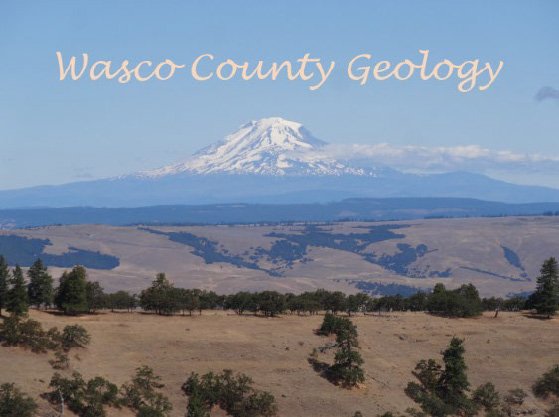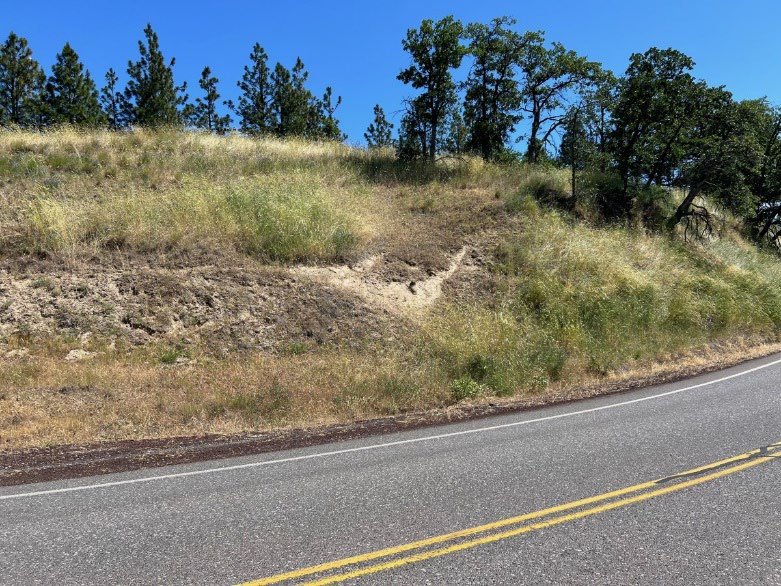2021 John Day Raft Trips
The GSOC John Day River Exploration May 25 -28, 2021

Under threatening skies, 12 GSOC adventurers and 4 Ouzel guides with raingear nearby shoved off from the banks of the John Day River near Service Creek. Our gear boat had already drifted off with all our personal belongings, tents and provisions committing us to this journey. Led by Geologist Dr. Gordon Grant, we were soon floating past outcrops of Picture Gorge Basalt leaving all traces of civilization behind. Geesockers in this “early group” included Nancy Collins and her partner Kevin Brown, June and Norm McAtee, Brian Scott and Bernadette LeLevier, Julia Demaree, Bill Burgel and his spouse Charlotte Finn who invited their geology-friendly friends Ron and Cathy Waterman.
Paddle Raft
Dr. Grant oared his solitary raft from raft to raft explaining the subtleties of the geologic landscape as it unfolded while we drifted downstream. Soon the skies opened up and those who hadn’t already covered up, did so as we continued to make our way to camp. Because of the weather, our guides camped early this first day which enabled us to hike up a side canyon to look at the hackly exposures of Picture Gorge Basalt. Dr. Grant delighted in explaining the evidence for the numerous debris flows that surrounded us as we hiked…now under a rather heavy rainfall. We sixteen were very grateful when our rainstorm ended just before dinner.
As we packed up the next morning, Dr. Grant walked us through the depositional regime along the beach we found in camp. He discussed the 1861 flood event on which we camped the previous night. Day 2 had us floating out of the last of the Picture Gorge Basalt and into the John Day Formation. As we approached Twickenham, the only habitation on our journey, the valley widened out as we encountered the ash beds of the John Day Formation. Highly erodable, the ancestral John Day cut easily into the John Day Formation ashbeds creating pasturelands for the ranchers in the Twickenham area. We soon drifted out of the John Day and into the Clarno Formation. We would stay in this varied facies terrain until reaching its type locality at Clarno, the end of our float trip. Day 2 camp was a “tight” affair with us all pitching a tent within 10 feet of each other. Our weather improved significantly and many of us jumped in the river to bathe.
Our float on Day 3 saw us encountering the basaltic and andesitic lava flows and debris flows of the Clarno Formation. We hiked with Dr. Grant at lunch time on a large meander loop breaking rocks again and again to examine the erosion “rind” on each clast. Our guides paddled against a slight headwind as we reached our last night’s camp at Last Chance campground which offered us geologists a prime view of Cathedral Spire (?), a plug of columnar Clarno Andesite. Our guides and a few of the guests dressed up on costume night.
Cathedral “Rock” “Spire” ???
As we prepared to push off on our last day, Day 4, Dr. Grant explained the nature of whitewater and how the frothy “white” seen on the tips of fast moving waves was the result of energy conversation during super critical flow. He further explained that he and his associated were working on a hypothesis attempting to examine if lava flows also exhibited some of the same features as seen in water moving under various tranquil and super-critical flow regimes.
By 2pm we reached our take-out at Clarno and quickly de-rigged. I think I speak for the group in saying that after being re-supplied, we would have gladly continued another 5 days down to Cottonwood, the next location on the John Day River from which you can exit the river. Thanks to GSOC for organizing such a wonderful journey and we hope that GSOC arranges for more geologist-guided trips with Ouzel Outfitters in the future.
Thanks to Bill Burgel for his summary of the May 2021 John Day Raft Trip.





























































